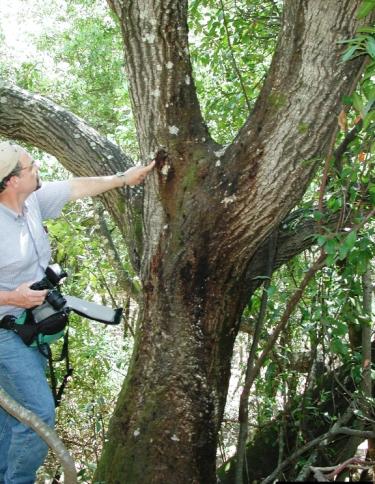Sudden Oak Death
What You Need to Know
Sudden oak death was first reported in 1995 in Marin County, north of San Francisco, California. Since then, it has killed oak trees from Monterey to Humboldt counties in California and in a small area of southwest Oregon. It is thought to have killed more than a million oaks and tanoaks. In 2004 it was found in several large nurseries on the West coast that ship plants to the rest of the country, but it has not gotten established anywhere else yet.
Are My Woods At Risk?
Sudden oak death affects California black oak, canyon live oak, coast live oak, Shreve oak, and tanoak. It can also live on dozens of other plants, including camellia, rhododendron, mountain laurel, lilac, and honeysuckle. These plants act as carriers.
So far, sudden oak death is only established in coastal counties of California and southwestern Oregon. This map shows those counties in pink. More detailed maps aren't very useful, since the fungus infects new stands of tree every year. Experts are worried that it may spread to other parts of the country on nursery plants.
With the right information, you may be able to protect your woods. Start by learning about sudden oak death biology, or jump to steps for damage control or prevention. And remember, help is always available.
How can I get more tips?
It’s simple! Enter your email below.

